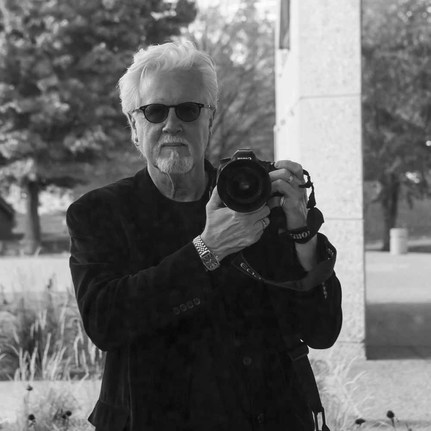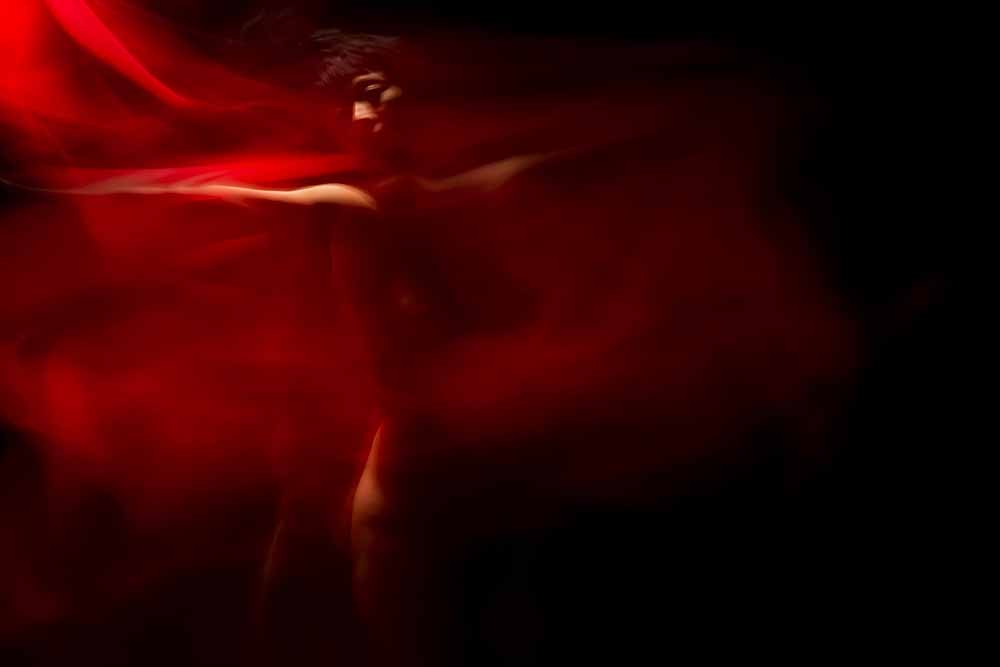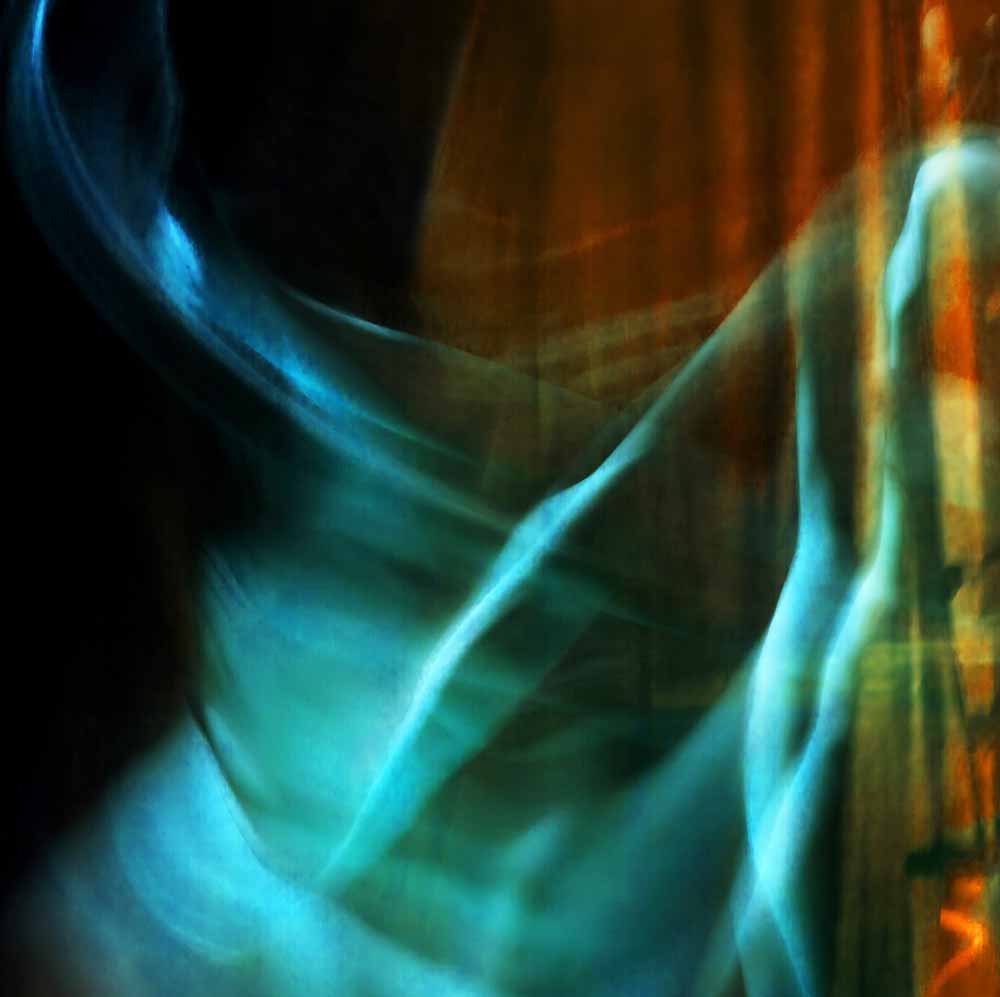 Tim Motley Tim Motley In January, Ray and I spent a delightful hour or so viewing the latest work of photographer Tim Motley at an exhibit and reception at Artsplace in Fremont. Tim, who has made a living as a commercial photographer for thirty-seven years, recently changed direction to concentrate on fine art abstract photography. As I listened to Tim discussing his inspirations and techniques with gallery visitors, it occurred to me that HeartWood readers might also be interested in what he had to say. Though I had already peppered him with questions the night of the reception, he graciously agreed to answer still more questions for this Q&A. I'm always fascinated when someone who's been successful following one path decides to take a chance and turn a different direction. You mentioned that your shift from commercial photography to fine art photography was something you'd been thinking about for a while. What made you decide it was the right time to make the move? It was one of those things where you're kind of gently pushed. I started out in fashion in back in the eighties, moved into high-end weddings, and then when the economy went down, my weddings went from fifty a year to four. Because of the economy and so many other photographers out there, I decided to go into fine art world. I had done some fine art work back in the nineties, but it really didn't go anywhere. This body of abstract work that I'm doing now, I'm very motivated to get it out there, get into galleries and museums. I look at this as my legacy. Was your previous fine art work similar in any way to the work you're doing now? It was very different. Quite a bit of it was travel photography—a lot of images from Italy. The rest of it was just fine-art things that I'd shot off and on through the years, like Tibetan monks. I have photographed events all my life, and after a while, with the events, I started getting little fine art pieces. And in the nineties, I was in an artist's co-op. We had a gallery in South Haven and we all sold our artwork. That kind of dried up when my weddings took over. Where did the initial idea for this new work come from? About three years ago, I was photographing a dance rehearsal. I was starting to get really bored with it, because the dancers would get up and move around, and then they'd sit down and talk about it. You could be there for four hours without much happening. So I started shooting abstracts of the dancers in the dance studio under fluorescent lighting and getting some interesting results. That's where it really took off. I thought, if I take the concept to my own studio where I can the control lighting and background, I bet I could get some remarkable results. How much experimentation did it take before you arrived at a process that would produce the results you're after? Actually, I'm still in the experimenting stage. But probably about a year into it, I started feeling confident and knowing I had something here to really treasure. After that, with each shoot, I continue to learn something. It just evolves. There's really no hard-and-fast rules that I use in this, with the exception that generally I use one light and one person, and they have to move. Those are the only requirements. I've been doing this for about three years, and as I go along my techniques shift and change a little day by day. One of the really neat things about this is, I felt like I had learned everything there was to learn as a photographer, and now all of a sudden this abstract world has opened up a whole new world for me. I'm learning much more about photography. For photography enthusiasts, can you say a little about the techniques you use in this work? We set up one light, and I have the model standing on the floor under the light. We put some music on. The music is very important; we try to put on music that they love to move to, dance or yoga or whatever, and then we start to shoot, using low shutter speeds. Usually the shoots last an hour only, because after that the model is exhausted and so am I. It's a real short time, but it's filled and compacted with energy like crazy. Every model that comes in brings something different to the shoot. Some are professional models, some are dancers, and I've had a number of actresses come in. Each person brings a little something different each time, be it through their personality or through their talent. That contributes to the difference in each shoot. How many images do you typically take to produce one of these pieces? In one session, we will shoot anywhere from 500 to 800 images. There's a whole lot of shooting going on. Usually out of that 500 or 800, I can come up with five or six really good pieces. Then I'll narrow that down to maybe one. The rest of it is just exploration. You mentioned that your wife, Patty Caterino, does the printing and any post-processing that's involved. Can you say a little about that process? Oh, absolutely. Being that I shoot everything digital, there's a lot of latitude with any of the images. Basically all we do with the images is what you would do in a traditional darkroom. The lights are darkened, maybe a little contrast and saturation, but that's it. All of the abstract work is actually done in the camera. After we shoot, quite often I'll spend a few days evaluating the images, and then I'll pull maybe 20 or 30. My wife will sit down with me, and then she and I will go over them. Her knowledge in the computer is far beyond anything I could ever do. She starts making little adjustments, and she'll see things in her mind's eye, and from that all of a sudden other things start coming out of the picture. In fact, the one picture that was like the main picture of the whole Artsplace show showed a blue body walking out of frame. That was a picture that I just breezed right over. My wife found it and said, "Oh, let me take a look at this," and she made a couple of minor adjustments and all of a sudden the picture took on a whole new life. I'm basically a photographer. I work the camera, but I don't work the printer. I don't have experience in that field. My wife and I really make a very good team. We've been together since 1995, and we have a good cohesion, where with what I shoot, she makes my images so much more beautiful. She's an artist in her own way. Anything she has an interest in, she can pick up some books, read them for about two weeks and then master whatever she wants to do. She's done everything from welding to glass mosaic work. She used to do a lot of oil painting on my photographs, where she'd take a black-and-white image and hand-color it. She has a phenomenal touch. She's very, very artistic. The things that we do together let her use that talent. What do you feel you're expressing in this new work? These abstracts kind of parallel my life. In the old days, when I was out there photographing events, my life was wide open to everyone, and people knew what was going on in my life. Now I'm much more reclusive, and my work is shifting with my personal life as well. Part of the idea behind the abstracts is, the body will have no clothing, no jewelry, simply because I don't want to depict this society. I would like those images to be as timeless as they can be. My personal feelings are, the more I see of society, the less I want to be a part of it. So the abstracts kind of play along with that, and are something different that no one else does. And this work speaks to me. It really does. And it stimulates me. I had reached the point a while back where the work just did nothing for me. All I did was make pretty pictures, but I couldn't feel anything coming from it. When I do these abstracts now, there's a feeling I get, a sense of accomplishment, definitely a sense of mystery. Sometimes I don't even understand what I'm getting, but I love what I'm doing. So I just continue down that path and see where it takes me. Every piece that you see of my work is a part of me. I feel that connected to it. I think for the first time in my life, I truly do feel like an artist, and I wouldn't trade that feeling for anything in the world. Where do you find inspiration? In the early days when I was shooting a lot of fashion, some of the fashion photographers like Helmut Newton and Richard Avedon inspired me. Nowadays my references that I use for studying are Picasso, Matisse, de Kooning. I really do see life in an abstract way now, and this is all I really see photographically, too. I study art all the time. If I'm not shooting or working on pictures, I'm studying other artists' work just trying to be inspired by it, analyze it, see how it can come into my work. How did you first get started in photography? Back in the 1970s, I got a camera and started photographing my sons. One day I was shooting one of my sons in the living room, and I did something different with the lighting, and it was the most different picture I'd ever made. That really inspired me. I was bitten by the bug then, and I took off with photography. I started reading everything could get my hands on about photography. I was a magazine junkie. I bought every magazine I could get on photography and devoured it. I dabbled in it until about 1985, when I met a guy at a camera shop who had a little studio in a warehouse in Grand Rapids. He said, "I'll tell you what, you come in and help me with my rent, and I'll teach you how to use studio lighting." I was with him for two months; then he took on a couple of other photographers because he wanted to lower the rent even further, and the place was too small for all of us. So in the same building, I built my own studio. I had close to 2,000 square feet that I only paid $200/month for. I was there for fifteen years in that building, shooting fashion and weddings and portraits. Then my wife and I met in '95 and the place we live now came up for sale in '97. Where we live now is in a little area called Tallmadge Township, about fifteen miles outside the city of Grand Rapids. We actually own an old town hall, and that's what my studio is in. In back of the town hall is our house. One benefit of shooting the abstracts in the studio is that it keeps me home more often. What suggestions do you have for anyone who's starting out in photography or who's been dabbling in photography for a while but wants to get better at it? The one thing I could suggest is, you have to have a very strong drive. You have to be dedicated to it and you have to be focused on it. To go the route that I've gone, you have to work at it 24 hours a day. Once I got into photography and started professionally, it was like there was nothing else that went on in this world to me except my photography. Are there other directions you'd like to take this work in the future? One of the ideas we're kicking around now is tying my abstracts in with cancer patients. One of the models who's been in probably three or four times to do these abstract nudes is a breast cancer survivor. She's 57 years old, and she's got scarring, and it's obvious what she's been through, and we made some very beautiful artwork of her. Further down the road, if we can find a patron to bankroll this kind of project, I'd like to make beautiful abstracts—nudes or portraits—with cancer survivors and have them displayed in a hospital. Is there anything else you'd like to add?
The show at Artsplace led to a contact in Ludington, and I'll be putting on a show at the Ludington Area Center for the Arts in 2018.
9 Comments
Nan
3/8/2017 08:02:16 am
These things happen, JQ! I just noticed and fixed a few boo-boos I'd missed in proofreading this post.
Sue S.
3/12/2017 04:38:56 pm
What an interesting story. Quite a visionary photographer!
Reply
Nan
3/16/2017 09:26:47 am
Wish you could have seen the work first-hand. It would definitely be worth a trip to Ludington to catch his exhibit next year.
Reply
6/29/2018 02:58:41 am
Tim Motley's style as a photographer is different from mine. Since I prefer using natural light on the photos I capture. Motley is at his best when he uses his lights because it obviously gives so much dramas on the photos he captures. That's indeed a talent because mixing lights has never been easy at all! The photo of that ballerina is indeed to die for and I feel envious because he seems to be a pro on this field. I really admire my fellow photographer who are good at lighting.
Reply
5/1/2024 01:08:27 am
I should claim solely of which it is brilliant! The blog is usually info in addition to generally make wonderful factors.
Reply
Leave a Reply. |
Written from the heart,
from the heart of the woods Read the introduction to HeartWood here.
Available now!Author
Nan Sanders Pokerwinski, a former journalist, writes memoir and personal essays, makes collages and likes to play outside. She lives in West Michigan with her husband, Ray. Archives
April 2022
Categories
All
|










 RSS Feed
RSS Feed